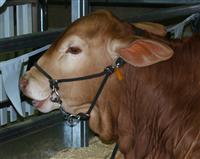
Study Disease Recognition and Animal Health
Learn to identify and describe common diseases and conditions found in livestock, and how to appropriately treat or respond to these. This course provides an excellent foundation for animal health workers to better identify, understand and respond to signs of ill health in animals.
Specific topics include signs and symptoms of diseases, disease classification and causes, fever and immunity, tissue repair, and wounds and cell changes.